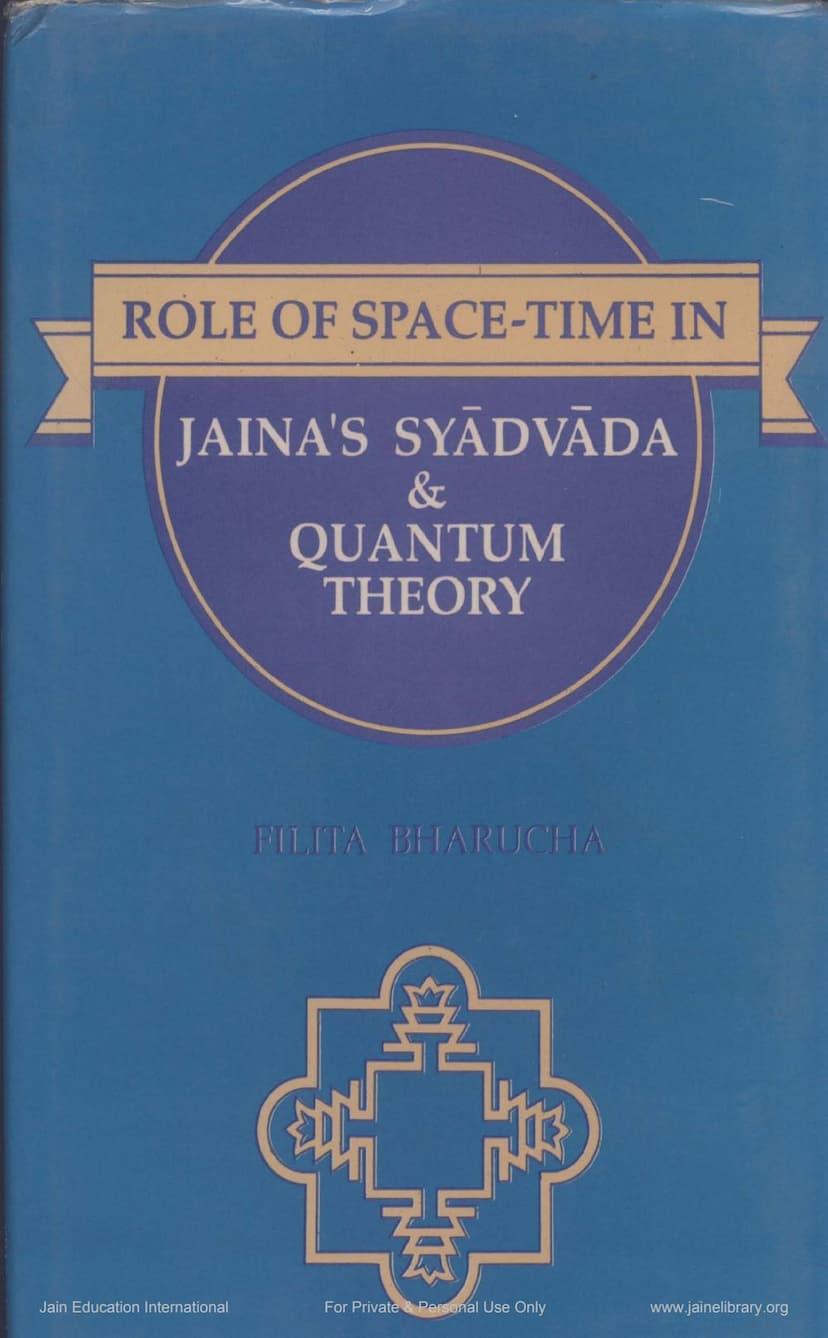Role Of Space Time In Jainas Syadavada And Quantum Theory
Added to library: September 2, 2025

Summary
Here's a comprehensive summary of the book "Role of Space-Time in Jaina's Syadvāda and Quantum Theory" by Filita Bharucha, based on the provided text:
Core Argument and Aim:
The book argues that ancient Jain philosophy, particularly its Syadvāda (doctrine of conditional predication), offers a framework that resonates with and can help advance modern scientific understanding, specifically in the realm of quantum theory and the unification of space-time as proposed by Einstein. The author aims to demonstrate how Eastern and Western thought on space and time are interconnected and play a significant role in contemporary understanding of reality, particularly by bridging classical logic with the peculiar logic of the quantum world.
Key Themes and Chapters:
The book is structured to explore the conceptual parallels between Jain philosophy and modern physics:
-
Chapter 1: Advent of Space-Time: This chapter introduces the 20th-century understanding of space-time, contrasting it with earlier philosophical views (Plato, Spinoza, Kant). It highlights Einstein's revolutionary concept of space-time as a unified continuum, moving away from absolute notions of space and time. The chapter sets the stage by emphasizing the shift from classical logic to a more nuanced, "heterologic" approach needed for modern scientific understanding.
-
Chapter 2: Jaina's View of Reality as Modern Thoughts of Space and Time: This chapter delves into the Jain ontological framework, distinguishing between jiva (consciousness) and ajiva (non-consciousness, including matter, space, and time). It focuses on the ajiva category, particularly ākāśa (space) and kāla (time), and their infinite nature. The central argument here is how the Jain concept of Syadvāda, with its sevenfold predication (Saptabhangi naya), offers a relativist perspective that aligns with the need for a nuanced approach in modern thought. The author explores the possibility of representing Syadvāda through a 3-valued "deviant" logic, drawing parallels to the probabilistic nature of quantum mechanics.
-
Chapter 3: Role of Quantum Theory in Deviant Logic: This chapter bridges the gap between Jain logic and quantum mechanics. It begins by touching upon the Jain atomic theory (anu) and then moves to the challenges of quantum theory, particularly the transition from classical to quantum behavior and the problem of measurement. The author argues that classical logic is insufficient for the microscopic world of quantum mechanics and proposes the use of "deviant logic" or "quantum logic." The chapter analyzes the experimental meanings of logical connectives (conjunction, disjunction, negation) within the context of quantum measurements, suggesting that their classical meanings might need modification. It notes that the distributive law, a cornerstone of classical logic, often fails in quantum logic.
-
Chapter 4: Role of Universals, Thought Experiments: Reductio ad Absurdum: This chapter offers a broader survey of concepts related to space and time.
- Universals: The author redefines universals as relational aspects resulting from the unification of space and time, linking them to a spatio-temporal relational construct.
- Thought Experiments (Gedanken): This section examines the status of time within thought experiments, discussing different philosophical views on temporal "flow" and the "now."
- Reductio ad Absurdum: The chapter connects this logical method, used by philosophers like Nagarjuna, to the ideas of "heterologic" and the need to understand the limitations of reason when apprehending reality, especially in relation to concepts like causality and motion.
-
Chapter 5: General Theories of Space-Time: This chapter provides a survey of classical theories of space-time, starting with the Newton-Leibniz controversy regarding absolute versus relational space. It discusses various classical models (Machian, Leibnizian, Neo-Newtonian, Aristotelian) and then transitions to Einstein's geometrical interpretation of space-time as a four-dimensional manifold, the foundation of relativity theory. The chapter outlines the mathematical description of the space-time continuum and its properties as a differentiable manifold.
-
Chapter 6: Logico-Spatio-Temporal Space: This chapter, presented as a paper read at a 1992 seminar in Berlin, offers the author's developed "Hetero-Logical Approach." It aims to materialize physical "events" within a concept of a "Logico-Spatio-Temporal Manifold." This approach evaluates concepts based on probabilities, proposing a "heterologic" scheme for understanding the micro-world. The chapter details a matrix formulation for representing events within this framework, considering both order and degree of logic in relation to probability.
Key Arguments and Contributions:
- Syadvāda as a Precursor to Probabilistic Logic: The book posits that Jain Syadvāda's multi-valued approach to truth and predication (seven possibilities) can be understood through the lens of deviant or probabilistic logic, which is crucial for quantum mechanics.
- Unification of Eastern and Western Thought: Bharucha seeks to demonstrate that ancient Indian philosophical insights, particularly from Jainism, are not merely historical curiosities but offer valuable conceptual tools for understanding modern scientific challenges.
- Critique of Classical Logic: The book consistently highlights the limitations of classical logic when applied to the complexities of the quantum realm and the nuanced nature of reality as described by Syadvāda.
- Deviant Logic for Quantum Mechanics: The author advocates for the development and application of "deviant logics" (e.g., 3-valued, probabilistic) to accurately represent the counter-intuitive findings of quantum theory, especially regarding the meaning of logical connectives and the failure of certain classical laws like distributivity.
- Space-Time as a Logico-Spatio-Temporal Construct: The ultimate aim is to propose a unified framework where space-time is not just a physical continuum but also possesses a logical structure that accounts for the probabilistic and conditional nature of events, particularly at the quantum level.
In essence, "Role of Space-Time in Jaina's Syadvāda and Quantum Theory" is an ambitious interdisciplinary work that attempts to bridge ancient Jain philosophical concepts with cutting-edge physics, suggesting that a more integrated understanding of reality can be achieved by recognizing the logical underpinnings of both.